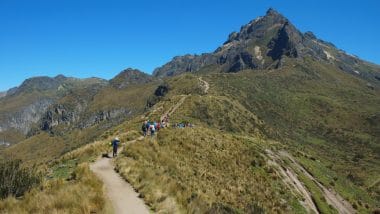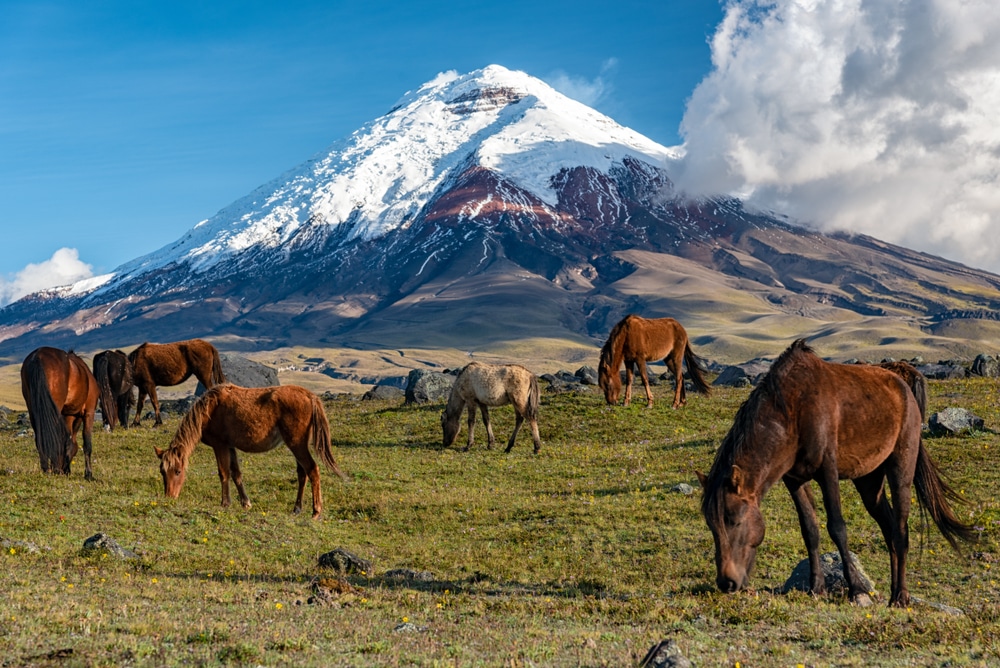Since the beginning of the Corona pandemic, countless travel plans have been thrown into disarray and now acute wanderlust is slowly making itself felt in many. Fortunately, there are now some opportunities to discover the world again – for example, Ecuador is open to German travelers. Good news for all those who want to get to know this beautiful country on the equator in South America – especially the Andes with their high peaks are ideal for extensive hiking and mountaineering tours.
If you hike or climb a country meter by meter in altitude, you will get your money’s worth in Ecuador : many mountains and areas that are located at 4000 m (or higher) above sea level can even be reached without hiking. Nevertheless, the adventure should be tackled with an experienced mountain guide . In Ecuador, there are no less than ten mountains that are over 5000 m high and not only accessible to professional mountaineers.
However, anyone with ambitious trekking plans in the Andes should of course prepare accordingly. In addition to the unaccustomed heights, to which you should gradually descend in order to acclimatize properly and avoid altitude sickness, a lack of endurance is a problem for many. So you should prepare for it in Germany before a trekking holiday in Ecuador. Cardio training in the gym is an optimal way to get fit.
The following hiking tours are particularly worthwhile in Ecuador:
Cotopaxi (5897m)
One of the most impressive volcanoes in the Andes is certainly Cotopaxi. Its almost perfectly symmetrical cone is recognizable from several provinces of the country and rises majestically from the landscape at almost 6000 m. The Cotopaxi, like the Iliniza Norte, is usually climbed in two days. From Quito you can reach the parking lot at an altitude of 4500 m in about 3-4 hours, and after an approximately one-hour hike you are at the Base Camp Refugio José Rivas at 4800 m. After a rather short night’s sleep, you set off on the ascent around midnight. Technically not demanding, but in freezing cold, you hike to the summit in about 6-8 hours. However, a little experience with crampons and ice axes is required. But the view from the very top – into the landscape and the smoking crater – is definitely worth the effort.
Rucu Pichincha (4680m)

The Rucu Pichincha is the local mountain of Quito, Ecuador’s capital, and can be easily reached by cable car directly from the city. The teleférico takes you up to about 4000 m altitude and the view from up there of Quito and the Tumbaco Valley is simply breathtaking. In three very strenuous hours, the summit can be reached by hiking. The hike is not very technically demanding, but you have to scramble a bit shortly before the destination. You should plan at least half a day for this tour. As a relatively “low” peak, Rucu Pichincha is suitable as an acclimatization mountain to prepare for higher expeditions.
Iliniza Norte (5160m)
Two hours away from Quito are the Iliniza Twin Mountains, which are also suitable for acclimatization ascents. As the name suggests, Iliniza Norte is the northern of these two peaks. The south summit, Iliniza Sur, can only be reached via a technically very demanding and difficult ascent, while access to the north summit is much easier. But even for this comparatively easy tour, you should take two days: on day 1 you reach the Nuevo Horizontes Base Camp in 3-4 hours, from where you dare to continue the ascent early in the morning on the second day. The last 300 meters of altitude then also require a lot of climbing technique.
Cotopaxi (5897m)
One of the most impressive volcanoes in the Andes is certainly Cotopaxi. Its almost perfectly symmetrical cone is recognizable from several provinces of the country and rises majestically from the landscape at almost 6000 m. The Cotopaxi, like the Iliniza Norte, is usually climbed in two days. From Quito you can reach the parking lot at an altitude of 4500 m in about 3-4 hours, and after an approximately one-hour hike you are at the Base Camp Refugio José Rivas at 4800 m. After a rather short night’s sleep, you set off on the ascent around midnight. Technically not demanding, but in freezing cold, you hike to the summit in about 6-8 hours. However, a little experience with crampons and ice axes is required. But the view from the very top – into the landscape and the smoking crater – is in any case the effort


